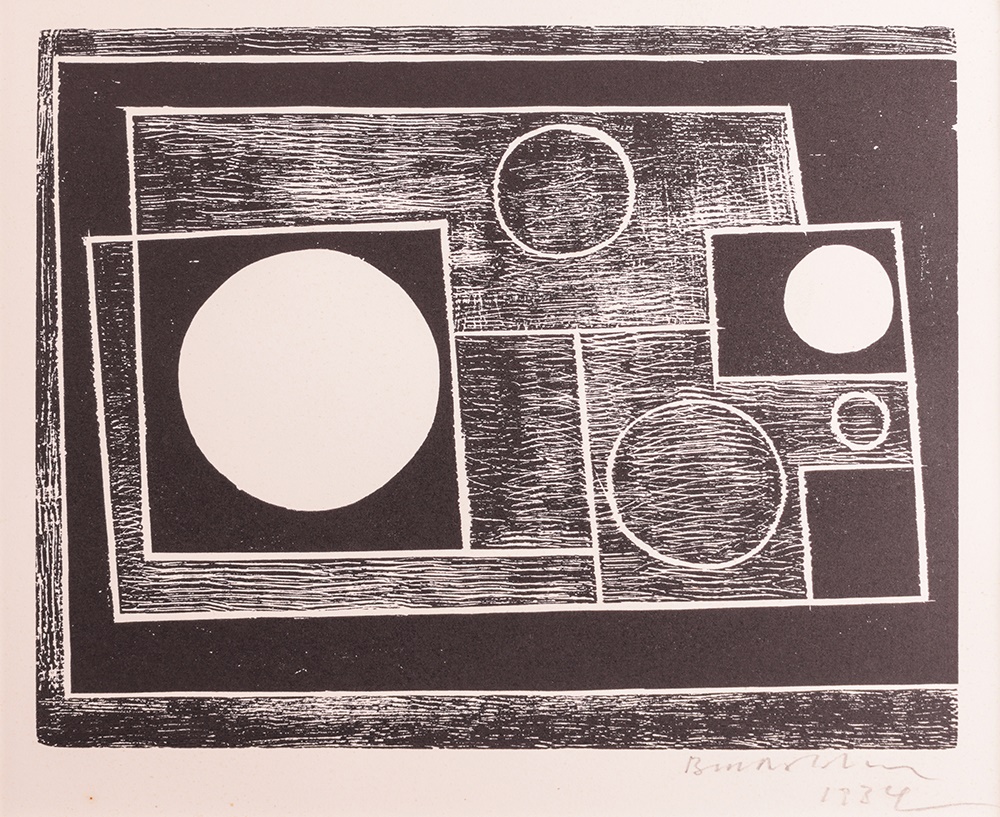Who Were the St Ives School Artists?
Several key figures defined the legacy of the St Ives School
15/10/2025
The St Ives School was not a formal movement but a community of artists who lived and worked in the small Cornish fishing town of St Ives, particularly from the 1930s to the 1970s. Inspired by the rugged scenery, ever-changing waters, and the gentle light of the landscape, they were renowned for their innovative approaches to painting and sculpture, playing a pivotal role in the development of British modern art.
'Two Forms' by Barbara Hepworth
The town's artistic reputation flourished after the arrival of Ben Nicholson and Barbara Hepworth in 1939. On an earlier visit to St Ives, Nicholson and Christopher Wood had discovered the work of Alfred Wallis. The raw simplicity of his naïve paintings, created with industrial paints on cardboard and driftwood, inspired Nicholson to move to St Ives to escape wartime London. This encouraged an influx of artists who were seeking refuge and inspiration. St Ives and its locality fostered an environment ripe for creative exchange, attracting visits and residencies by luminaries such as Mark Rothko and Francis Bacon.
By the 1950s, St Ives had become synonymous with cutting-edge and abstract British art.
Several key figures defined the legacy of the St Ives School, including Ben Nicholson, whose marriage to Barbara Hepworth brought further prominence to the group. His studio attracted artists such as Patrick Heron and Peter Lanyon.
Hepworth's flowing, organic sculptures drew inspiration from the Cornish coastline, with its crashing waves, rocks, and shells, and combined that with the influence of artists such as Picasso and Piet Mondrian.
'Five Circles' by Ben Nicholson
Peter Lanyon was a native of Cornwall with a passion for gliding, which would, sadly, ultimately bring about his death. It provided him with aerial views of the region's geography and inspired his abstract paintings, saying he couldn't paint anything which did not reference this powerful landscape.
Terry Frost moved to the area after World War II, having started painting during his internment at a prisoner-of-war camp. He assisted Hepworth and later set up his own studio, where his colourful abstract prints and collages have made him one of England's most celebrated abstract artists.
Other notable artists include Roger Hilton, Patrick Heron, and Wilhelmina Barns-Graham, who founded the Penwith Society of Artists. Their sublime landscapes of the area continue to resonate with collectors.
Finally, it would be remiss not to mention Bernard Leach, who founded the Leach Pottery in St. Ives in 1920. He brought experimentation and an interest in Far Eastern philosophy to his work, earning him the title of the father of British studio pottery.
Works from the St Ives School are highly prized on the contemporary art market, with collectors drawn to the combination of abstraction and landscape, as well as the historic significance of St Ives artists within the context of 20th-century British art.
Here at Dawsons we have sold numerous works by the St Ives Group. Harnessing our dynamic in-house marketing team who target a huge global audience of known buyers, means that we can secure the highest prices for our clients at auction. Recent successes include 'Judy' by Peter Lanyon, which sold for £18,000.
Related Articles
Who Was in the Bloomsbury Group of Artists?
Who Were the School of East Anglian Artists?
How Can I Sell an Art Collection?
Buy & Sell Art with Dawsons
Our team of art experts make it simple to sell art online or buy fine art at auction. Dawsons Auctioneers provide accurate valuations, competitive results, and trusted advice every step of the way. Get in touch today to find out what your art is worth.
Call us on 0207 431 9445 or email us on info@dawsonsauctions.co.uk


